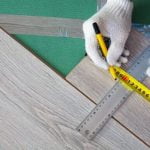Are you struggling with poor mobile signal at home and wondering “how can I improve mobile signal at home“? Having a strong and reliable mobile signal is essential for staying connected, whether it’s for making calls, sending texts, or accessing the internet. In this article, we will explore the factors affecting mobile signal strength, provide tips on evaluating your current signal strength, and offer strategies for improving signal reception at home.
Factors such as distance from cell towers, physical obstructions, and network congestion can all contribute to poor mobile signal reception at home. Understanding these factors can help you identify the root cause of your weak signal and take steps to address it. By evaluating your current signal strength and researching the best mobile network providers for your area, you can make informed decisions about improving your mobile signal.
Choosing the right provider and implementing strategies to boost your mobile signal are crucial steps in ensuring a strong and reliable connection at home. We will also explore the option of using signal-boosting devices such as repeaters and discuss tips for optimizing indoor coverage.
Additionally, we will address common issues with mobile signal at home and provide troubleshooting tips to help you resolve any problems you may encounter. Whether it’s making important calls or streaming content on your device, having a strong mobile signal at home is vital for staying connected in today’s digital age.
Factors Affecting Mobile Signal
Physical Barriers
One of the primary factors that can affect the strength of your mobile signal at home is physical barriers. These obstacles, such as buildings, trees, and terrain, can block or interfere with the transmission of the signal from the nearest cell tower to your mobile device.
If you live in a densely populated urban area with many tall buildings, or in a rural area with a lot of trees and hills, you may experience poor reception due to these physical barriers.
Distance From Cell Tower
Another important factor to consider is the distance from the nearest cell tower. The farther you are from a cell tower, the weaker your mobile signal is likely to be. This is particularly true for individuals living in remote or rural areas where cell towers may be few and far between. In such cases, improving your mobile signal at home may require alternative solutions such as signal boosters or repeaters.
Network Congestion
Network congestion can also contribute to poor mobile signal at home. During peak hours or in densely populated areas, network congestion can lead to reduced signal strength and slower data speeds. This can be especially frustrating for individuals trying to make calls or access the internet from their homes. Researching different mobile network providers and their coverage in your area can help you determine which one offers better performance during peak times.
Understanding these factors affecting mobile signal reception at home is essential for finding effective solutions to improve your mobile connectivity. By addressing physical barriers, optimizing your location in relation to cell towers, and minimizing the impact of network congestion, you can take steps towards improving your mobile signal at home.
Evaluating Your Current Signal Strength
If you’re experiencing poor mobile signal at home, it’s important to first understand the current strength of your signal. This will help you identify the extent of your connectivity issues and determine the best course of action for improvement. There are several ways to check your mobile signal strength, depending on the type of device you have.
One simple way to evaluate your current signal strength is by looking at the signal bars on your smartphone. Most phones display a visual representation of signal strength in the form of bars or dots. However, this method may not provide the most accurate measurement, as it can vary between different phone models and operating systems.
For a more precise assessment, you can use your phone’s built-in field test mode. This feature allows you to view numerical measurements of your signal strength measured in decibels (dBm). To access field test mode on an iPhone, for example, you can dial *3001#12345#* and press call. On Android devices, you can usually access this mode through the settings or by entering a specific code into the phone app.
Furthermore, there are various third-party apps available for both iOS and Android that can provide detailed information about your mobile signal strength. These apps can offer insight into not only the signal strength but also other factors such as network type (3G, 4G, etc.) and nearby cell towers.
Choosing the Right Provider
When it comes to improving mobile signal at home, one of the key factors to consider is the mobile network provider you are subscribed to. Different providers have varying levels of coverage and signal strength in different areas, so it’s important to research and choose the best one for your location. Here are some tips on how to choose the right provider for your area:
1. Research Coverage Maps: Start by researching the coverage maps of different mobile network providers in your area. Most providers have an online tool where you can input your address and see the estimated signal strength in that location. Check multiple providers to compare their coverage in your area.
2. Ask for Recommendations: Reach out to friends, family, and neighbors who live in the same area and ask them about their experiences with different mobile network providers. Their firsthand experiences can provide valuable insights into which provider has the best signal strength in your specific location.
3. Consider Network Technology: Different mobile network providers use different technologies such as 4G, 5G, and LTE, which can affect signal strength and coverage. Research which technology is most prevalent and reliable in your area and choose a provider that offers strong coverage with that technology.
By taking these steps to research and choose the best mobile network provider for your area, you can significantly improve your mobile signal at home and ensure a strong, reliable connection for all your communication needs.
Overall, choosing the right mobile network provider for your area is crucial in ensuring a strong and reliable mobile signal at home. By researching coverage maps, asking for recommendations, and considering network technology, you can make an informed decision that will improve your overall signal strength. Remember that each location is unique, so take the time to find a provider that best suits your specific needs.
Improving Signal Strength
When experiencing poor mobile signal at home, there are several strategies that can be implemented to boost your signal strength. One effective method is to utilize a signal booster or repeater, which works by capturing an existing outdoor signal and amplifying it within your home. These devices can significantly improve signal strength, especially in areas with weak reception.
Another way to improve mobile signal at home is by optimizing the location of your router or access point. Placing it in a central area of your home and away from obstructions such as walls and metal objects can help enhance your Wi-Fi signal, which is essential for making calls and sending texts over a Wi-Fi network when cellular coverage is poor.
Furthermore, consider utilizing Wi-Fi calling as an alternative when facing poor mobile signal. Many smartphones are equipped with this feature, allowing you to make calls and send texts over a Wi-Fi connection rather than relying solely on cellular networks. This can be particularly useful in areas where traditional cellular signals are weak or non-existent.
The key is to experiment with different strategies to find the best solution for improving mobile signal at home. Whether it’s investing in a signal booster, optimizing your Wi-Fi network, or utilizing Wi-Fi calling, taking proactive steps to address poor mobile reception can greatly enhance your overall connectivity at home.
| Strategies | Effectiveness |
|---|---|
| Signal Booster/Repeater | Highly effective in boosting weak signals |
| Optimizing Router Location | Can significantly improve Wi-Fi signal strength |
| Utilizing Wi-Fi Calling | Effective alternative in areas with poor cellular reception |
Using Signal-Boosting Devices
Improving your mobile signal at home may require the use of signal-boosting devices such as boosters and repeaters. These devices work by amplifying the existing signal and spreading it throughout your home, providing a stronger and more reliable connection for your mobile devices. Here are some options to consider when exploring signal-boosting devices:
1. Signal Boosters: Signal boosters, also known as cell phone amplifiers, are designed to amplify weak signals and rebroadcast them within a specific area, typically a home or office. There are different types of signal boosters available, including ones for specific carriers and ones that work with multiple carriers.
2. Signal Repeaters: Similar to signal boosters, signal repeaters also work to amplify and rebroadcast cellular signals within a designated area. However, instead of directly amplifying the existing signal, they receive the signal from an outdoor antenna, amplify it, and then rebroadcast it indoors.
3. Femtocells: A femtocell is a small cellular base station that connects to your internet service provider’s network and provides enhanced indoor coverage for your mobile devices. This can be a good option if you have a weak indoor signal but strong internet connectivity.
When considering using signal-boosting devices at home, it’s important to research and choose the right option based on your specific needs and circumstances. Additionally, you may need to check with your mobile network provider to ensure compatibility with their network before investing in any of these devices. By exploring these options, you can find a solution that works best for improving your mobile signal at home.
Optimizing Indoor Coverage
For many people, having a strong mobile signal at home is essential for staying connected, whether it’s for work, socializing, or emergencies. However, achieving reliable mobile signal indoors can be challenging due to various factors that affect signal strength. In this section, we will explore some tips and strategies for optimizing indoor coverage and enhancing signal strength within your home.
One way to improve mobile signal at home is by strategically placing your router or modem in an area where the signal is strongest. This may involve moving the device away from obstacles such as walls, large appliances, or other electronics that can interfere with the signal. Additionally, positioning the router at a higher elevation can help broadcast the signal more effectively throughout your home.
Another important factor to consider when trying to optimize indoor coverage is the use of signal-boosting devices such as Wi-Fi extenders or repeaters. These devices can amplify the existing signal and extend its range, providing better coverage in areas of your home where the signal may be weak or inconsistent. Researching different options and selecting a suitable device for your specific needs can significantly improve your mobile signal at home.
In addition to using external devices, you can also consider making simple adjustments to improve indoor coverage, such as keeping doors and windows unobstructed and minimizing interference from other electronic devices. By implementing these strategies and taking proactive measures to enhance your indoor signal strength, you can enjoy better connectivity and communication within your home environment.
Troubleshooting Common Issues
Identifying the Root Cause of Poor Signal
One of the first steps in troubleshooting common issues with mobile signal at home is to identify the root cause of the problem. Poor signal reception can be caused by a variety of factors, such as distance from the nearest cell tower, obstructions like buildings or trees, and even weather conditions. By understanding what might be causing the poor signal, you can better address and resolve the issue.
Checking for Network Outages
Another common issue that affects mobile signal at home is network outages. Before troubleshooting your own equipment or looking into signal boosters, it’s important to check if there are any reported network outages in your area. Most mobile network providers have websites or apps where you can check for service interruptions, and this information can help determine if the problem is on their end rather than yours.
Updating Software and Firmware
Sometimes, poor mobile signal at home can be attributed to outdated software or firmware on your device. Ensuring that your smartphone or mobile device is running on the latest software version provided by its manufacturer can help improve signal reception. Additionally, updating any firmware for signal boosters or repeaters can also contribute to better mobile signal strength at home.
Conclusion
In conclusion, a strong mobile signal at home is essential for staying connected, accessing information, and using mobile devices to their full potential. Factors such as distance from cell towers, structural interference, and network congestion can all contribute to poor reception. It’s important for individuals to evaluate their current signal strength and research the best mobile network provider for their area in order to ensure optimal coverage.
Fortunately, there are several strategies that can be implemented to improve mobile signal at home. From using signal-boosting devices such as repeaters and boosters to optimizing indoor coverage through the use of Wi-Fi calling or femtocells, there are options available to enhance signal strength. Troubleshooting common issues such as interference from electronic devices or obstructions can also help address connectivity problems.
For those experiencing frustration with poor mobile signal at home, taking action is key. By implementing the tips and strategies outlined in this article, individuals can work towards improving their mobile signal and enjoying reliable connectivity within their home. Whether it’s choosing the right provider or investing in signal-boosting devices, there are steps that can be taken to ensure a strong and consistent mobile signal at home.
Frequently Asked Questions
How Can I Make My Cell Signal Stronger at Home?
There are a few simple ways to make your cell signal stronger at home. First, try moving closer to a window or going outside as obstructions like walls can weaken the signal. You can also consider getting a signal booster or femtocell to improve your reception.
How Can I Boost My Mobile Signal Strength at Home for Free?
Boosting your mobile signal strength at home for free can be done by using Wi-Fi calling if your phone and carrier support it. Additionally, you can try reducing the number of devices connected to your Wi-Fi network to minimize interference and improve signal strength.
How Can I Improve My Mobile Signal Strength?
Improving your mobile signal strength involves finding the best location within your home to receive a strong signal, which may require some trial and error. You can also contact your carrier for assistance or consider investing in a signal booster if you consistently struggle with weak reception.

I’m thrilled to have you here as a part of the Remodeling Top community. This is where my journey as an architect and remodeling enthusiast intersects with your passion for transforming houses into dream homes.





